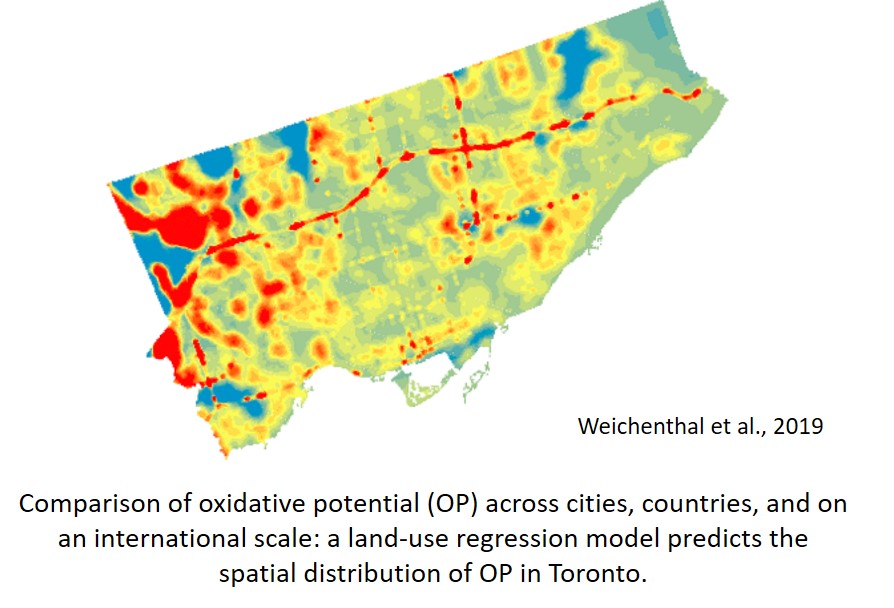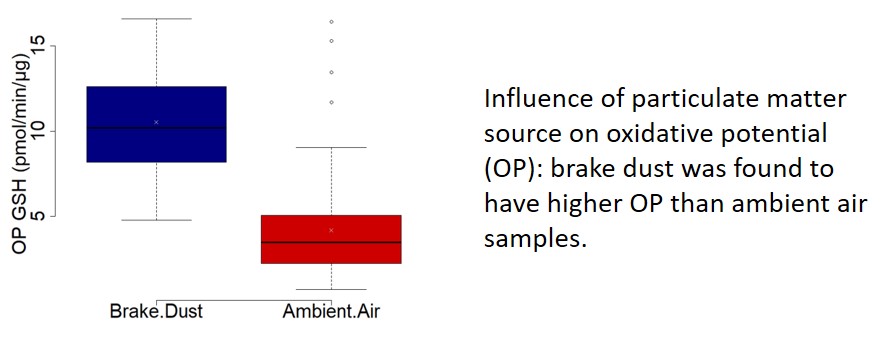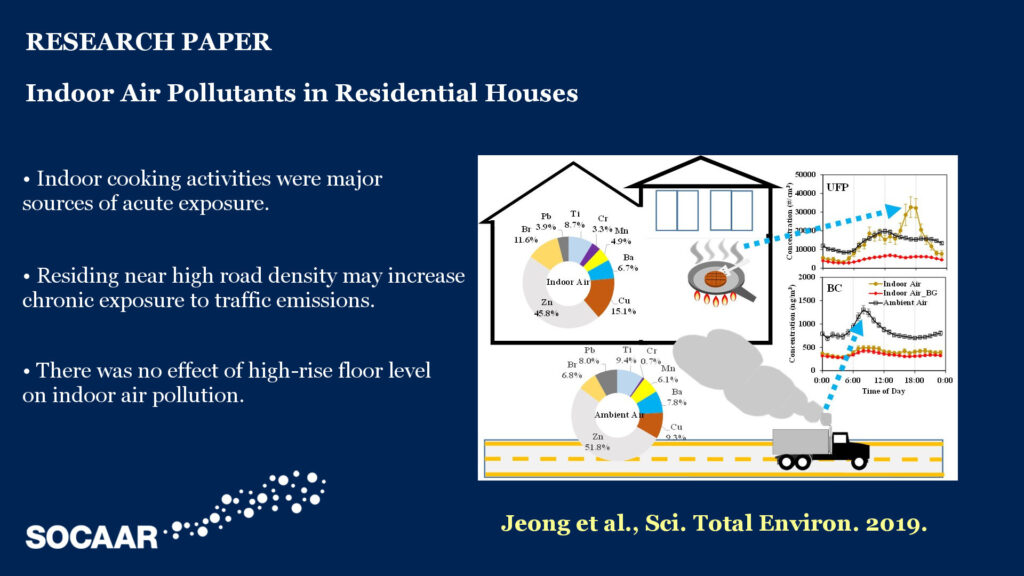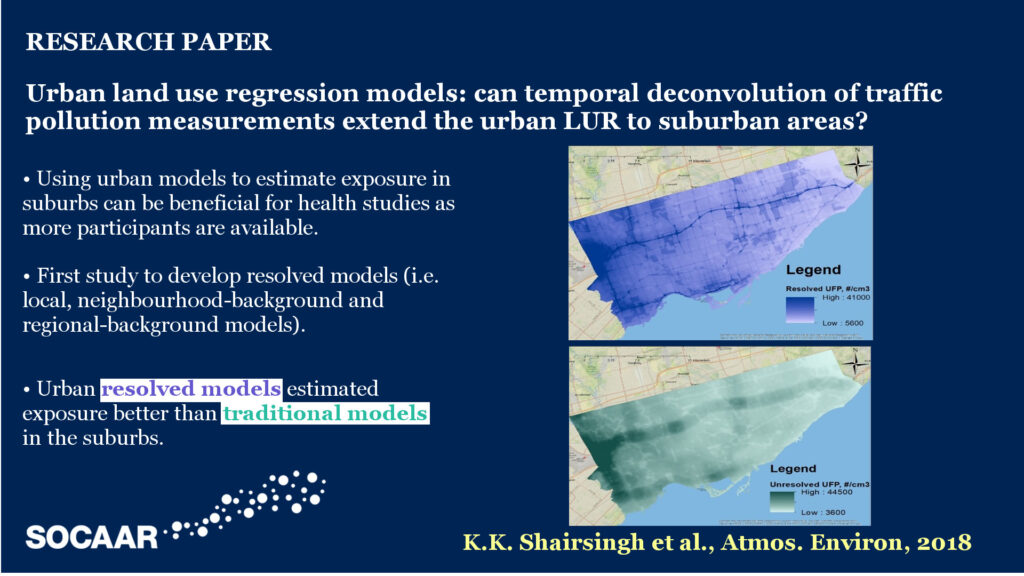
Air pollution is a mixture of many different chemicals present as gases or within particles. Air pollution is the top environmental burden on health, contributing to over eight million premature deaths globally per year, 14,400 of these in Canada.
Oxidative stress is believed to be one mechanism through which exposure to air pollution is connected to many adverse health outcomes. We have refined acellular assays to understand the potential of particles to induce oxidative stress, by measuring their capacity to deplete the protective antioxidants found in our lungs. Epidemiology conducted by collaborators has revealed that this oxidative potential metric provides stronger links with a wide range of health outcomes, than using the traditional mass-based metric to quantify exposure.
We are now investigating how the oxidative potential of particles varies across the globe. We have already established collaborations with partners in Korean and Brazil and are analyzing samples from 40 sites across Canada. We are also evaluating oxidative potential of particles from diverse sources and how oxidative potential has varied over time through the analysis of archived samples collected a decade ago and relate this to how the contributing sources have changed.




Publications
- Jeong CH., Traub A., Huang A., Hilker N., Wang J., Herod D., Dabek-Zlotorzynska E., Celo V. Evans G.J. “Long-term analysis of PM2.5 in Toronto during 2004-2017: Composition, sources, and oxidative potential” Environ. Pollut. 263(B) 2020 DOI:10.1016/j.envpol.2020.114652 (2020)
- Weichenthal, Scott; Shekarrizfard, Maryam; Traub, Alison; Kulka, Ryan; Rijleh, Kenan; Anowar, Sabreena; Evans, Greg; Hatzopoulou, Marianne “Within-City Spatial Variations in Multiple Measures of PM2.5 Oxidative Potential in Toronto, Canada” Env Sci & Technol 53(5):2799-2810, 2019 https://doi.org/10.1021/acs.est.8b05543.
- Ling Liu, Bruce Urch, Mieczyslaw Szyszkowicz, Greg Evans, Mary Speck, Angela Van Huang, Karen Leingartner, Robin Shutt, Guillaume Pelletier, Diane R. Gold, James A. Scott, Jeffrey R. Brook, Frances S. Silverman “Metal constituents and oxidative potential in urban particles influence systemic inflammatory and neural biomarkers: A controlled exposure study” Environ. Inter. 2018 Dec;121 (Pt 2):1331-1340. https://doi.org/10.1016/j.envint.2018.10.055.
- Jeong C-H., S. Salehi, M. L. North, C-W. Chow, G. J. Evans “Indoor measurements of traffic-related air pollutants in residential houses in urban and suburban areas: Indoor versus ambient concentrations”, Sci Total Eviron 693(25), 2019 https://doi.org/10.1016/j.scitotenv.2019.07.252
- N. Groulx, H. Movahhedinia, P. Edwards, F. Qureshi, L. Yip, K. Katz, S. Mubareka, G.J. Evans “Medical Air in Healthcare Institutions: A Chemical and Biological Study” Atmos. Environ. 219 Accepted Oct 2019. https://doi.org/10.1016/j.atmosenv.2019.117031
- Lavigne, É, R. T. Burnett, D. M. Stieb, G. J. Evans, K. J. Godri Pollitt, H. Chen, K. van Rijswijk and S. Weichenthal1 “Fine Particulate Air Pollution and Adverse Birth Outcomes: Effect Modification by Regional Nonvolatile Oxidative Potential” Environ Health Perspect.126(7) 2018 https://doi.org/10.1289/EHP2535
- Weichenthal S., Eric Lavigne1, Greg Evans, Krystal Godri-Pollitt, Rick T Burnett “Ambient PM2.5 and Risk of Emergency Room Visits for Myocardial Infarction: Impact of Regional PM2.5 Oxidative Potential: A Case-Crossover Study” Environ. Health 15:46 2016 https://doi.org/10.1186/s12940-016-0129-9 2016
